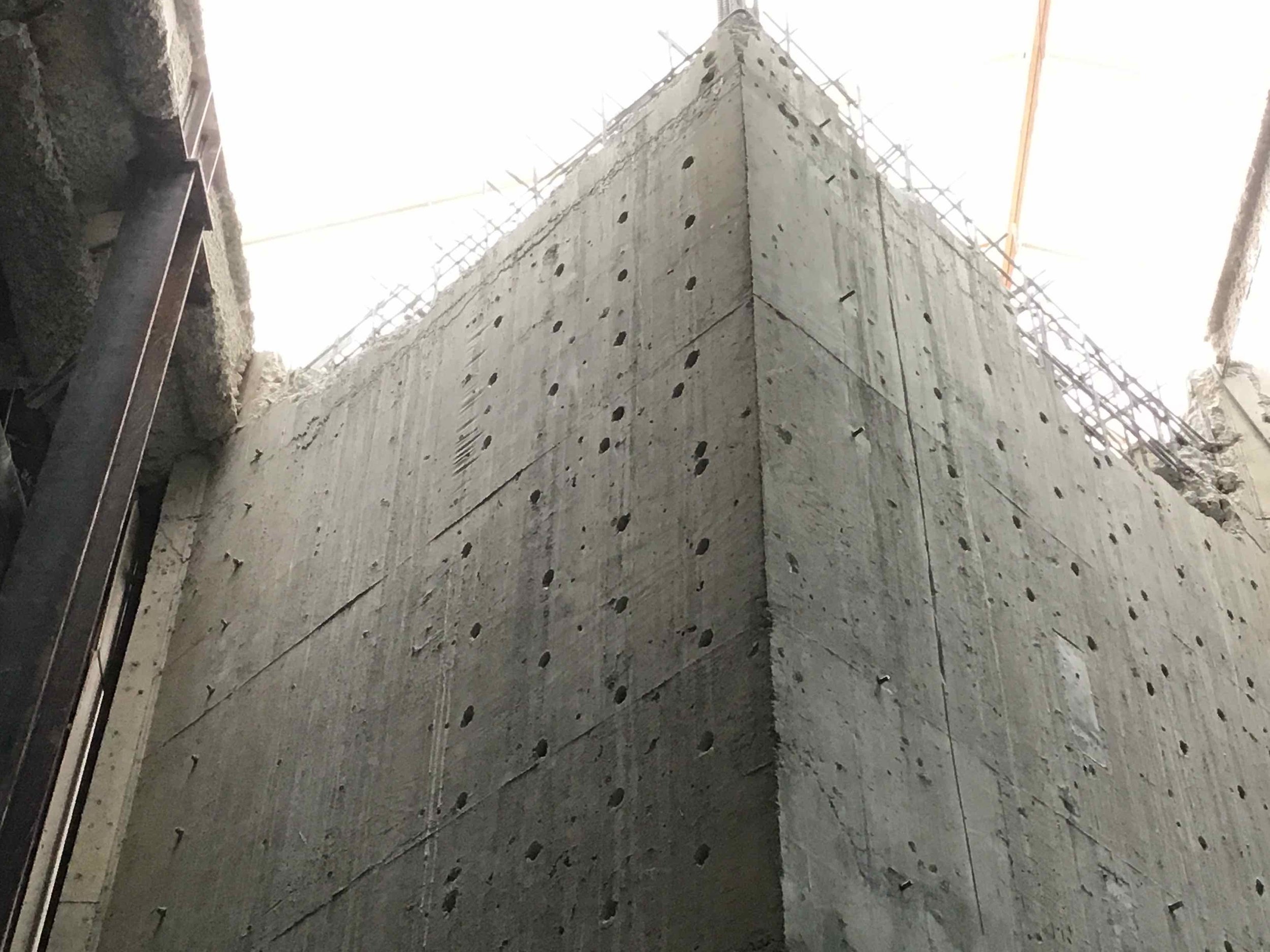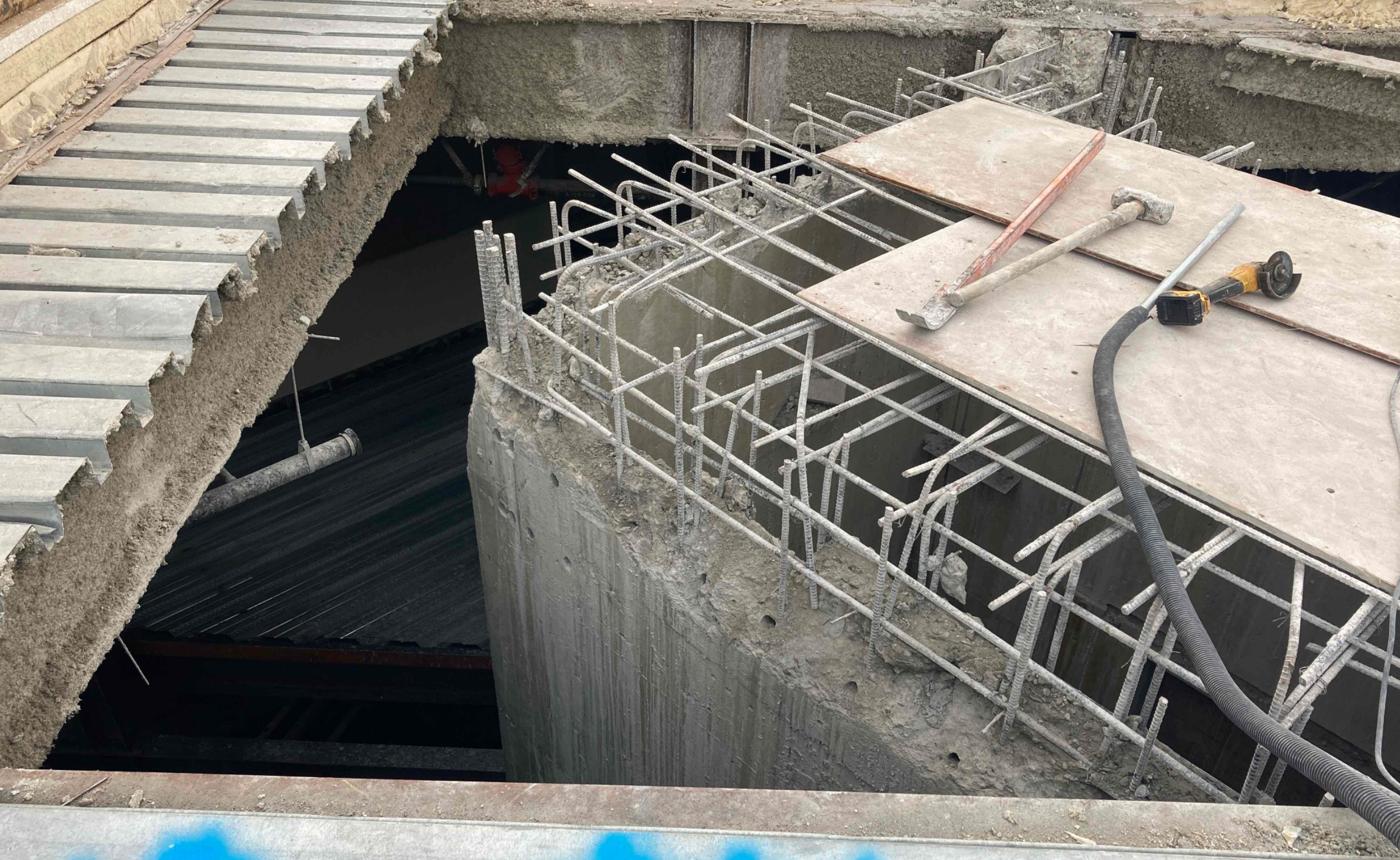Demolition of Vertical Reinforced Concrete Walls (Airport Elevator Shaft)
Demolition of Vertical Concrete Elevator Shaft Walls
PROJECT
Elevator Shaft in airport (pictures below)
MATERIAL
Reinforced concrete
12 to 24 inches thick
2 or 3 mats of #5 & #8 rebar
BACKGROUND
This fully functioning airport had 50% of the structure removed and replaced in three phases. All normal airport activities continued without interruption for the duration of the project.
LOCATION
Juneau, Alaska, USA
CONTRACTOR
Dawson Construction
CHALLENGES & RESTRICTIONS
Needed a solution that allowed the demolition of the shaft while airport continued to operate that:
- met noise restrictions
- minimized or eliminated dust and water on site
METHODOLOGY
Product: Dexpan Type 2
Hole Diameter: 1-1/2”
Hole Spacing: 6” from corners, 12” apart in the field
Drill Depth: As deep as possible without punching through
Filling Holes: Transmission funnels were used as the ends were flexible and we could get the material loaded quickly
Drilling Jig
”With so many holes to drill (900), I ended up making three jigs for drilling, one with 5 holes, one with 4 and then a single for places the other did not fit. I used a 30 degree angle that seemed to keep the majority of the Dexpan inside the hole.
The jig reduced worker fatigue, kept all the holes on grid and exactly the same depth. By attaching a Hilti hepa vacuum we kept my guys safe from Silica, reduced dust inside the building and kept the holes clean.
Because this was not an engineered system, I also had all of the guys working wearing full face respirator to be sure we did not have any Silica exposure.”
CONTRACTOR OBSERVATIONS
”The biggest takeaway was filling the holes in a flowing direction from left to right. That helped break it up the best.
The deeper the holes the better Dexpan works.
Drill all the holes at one time. This gives you the freedom to fill whatever section you want. It also lets the cracking start pushing down the wall in the line you have selected. Pre-cracking on area’s that we had not filled was common as we worked down the wall. These crack would get filled with the next round of Dexpan and increase the next sections movement.
Select the section you want to remove. Fill the holes in in a systematic fashion starting at the top and working down the outside corners. We filled the holes closest to the corner on both faces at the same time so that it would bust it up equally. After the corner we found that filling the outside rows of holes and working to the center was the most effective. We loved to see the ½ to ¾ cracks at the corners because this was the area with the most rebar to remove.
Filling the Dexpan on all four sides of the elevator shaft was much more effective than doing one wall at a time. I am not sure exactly why but it is possible that the cracking opened up the sides so that the other sides.”
“Dexpan shattered my expectations to get this tough job done.”
Ron Reed, Dawson Construction
ACKNOWLEDGEMENT This article is made possible by the generous collaboration and spirit of best practice and information sharing of Ron Reed and Caleb McGraw at Dawson Construction. Can’t thank them enough.
Dawson is a full-service general contractor serving Alaska and Northwest Washington. We have distinguished ourselves in the construction industry through providing exceptional value in a professional, proactive and enjoyable manner. Our people love what they do and take pride in delivering excellent projects.
More Customer Stories LINK





